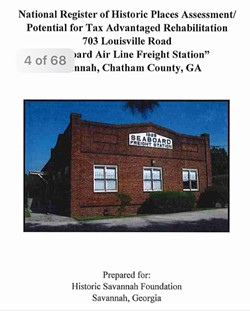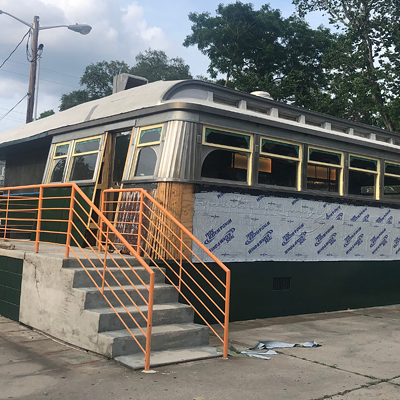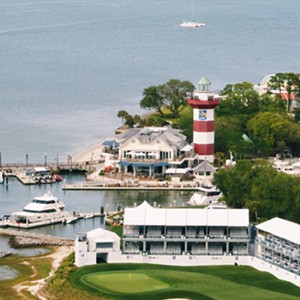I HATE to say I told ya so. But a few weeks ago I warned it was probably too late to save the historic Seaboard Freight Station from demolition, that the whole sordid process was simply too far along for the public to be able to stop it.
Tragically, that seems to be the case.
But what’s really enraging about last week’s betrayal by the Metropolitan Planning Commmission is how close they seemed to be to actually listening to the public and forcing the developer, WEDP, to protect the building.
In the end, however, the MPC voted 9-3 to accept the MPC staff recommendation to approve the general development plan, which includes destroying the Seaboard to make way for upscale apartments on Louisville Road.
In an especially cynical gesture, the developer has “generously” offered to save the Seaboard’s sign, and maybe allow a historical marker near where it once stood.
The only hope left is for citizens to lobby City Council to change its mind. Good luck with that — Council already approved selling a tract of surplus property to the developer so that the project can go ahead.
It’s a dark moment in Savannah history, on par with the loss of similar civic gems such as Union Station, Johnny Harris, and the old DeSoto Hilton, among others.
Over a dozen members of the public spoke forcefully to the MPC last Wednesday of the need to preserve the depot, one of only two historic train stations from the era left in the entire state.
“We respectfully disagree with the MPC staff’s recommendations here,” said Daniel Carey, president of the Historic Savannah Foundation.
Carey pointed out the many issues surrounding the project, from the need to re-engineer a portion of the Savannah-Ogeechee Canal, to securing permits from the Corps of Engineers, to the frequent, heavy flooding in the low-lying area, to the historic nature of the freight station itself.
Mentioning the pre-meeting with MPC staff right before the full gathering, Carey observed:
“It seems odd, because the whole time there was an apology or a reason not to do something, and then they wound up recommending it. There are so many reservations and concerns, it was curious to me how we wound up with a recommendation for this,” he wondered aloud.
Carey concluded, “We’re very confident that the building is historic and it’s National Register eligible.... there are too many alternatives to the proposed demolition, and [the developer’s plan] isn’t really vetted or resolved.”
Indeed, the new apartments will be in such a low-lying flood area that the bottom two floors will be for parking garages, which the developer admits might frequently be flooded.
Local architect Kevin F. Rose passionately advocated for saving the Seaboard:
“This building can be saved on a flood plain. We’ve done it — Pin Point is an example of where that’s been done,” Rose said. “But demolition can’t be undone. We can name hundreds of buildings that we’ve lost. This building isn’t protected, but it is historic.”
For a hot minute, public input seemed to be having an effect. Several Commissioners expressed open skepticism about the developer’s ambitious, almost fanciful, plan, especially the extensive hydroengineering necessary for the Canal itself.
MPC member Lacy Manigault said he’d received calls from City Council members asking if the Commission was really going to vote to demolish the Seaboard.
“I couldn’t answer. It is embarrassing to be in a position on something of this nature which will make a lot of people not dislike us, but realize that we don’t know what we’re doing,” Manigault said bluntly.
So what happened to push the decision through? A threat.
County Manager Lee Smith — an “ex officio” member of the MPC, who gets the seat by virtue of his job — spoke up at the end of the meeting, right as Chairman Joe Ervin called for a vote.
“We have to stick to the purview of this board,” Smith said. “I will absolutely vote for this project, because if you do what I’m hearing you saying you’re gonna do, you are outside of this purview, and I will contact the County Attorney.”
Smith — who as an ex officio member shouldn’t be allowed to make a motion at all in my opinion — was the one to make the motion to accept the staff recommendation to let the development go ahead.
That was all that any fence-sitting members of the MPC needed to hear: that there was a way to avoid accountability.
It was a shameful display, and a shameful day in Savannah.
What harm can it do to make a stand? To vote your conscience, and let the chips fall where they may?
Isn’t that why you’re there?
If not — why are you there?
An MPC vote is largely non-binding, so the worst thing that could happen is that other officials will see that you take the substantial public opposition to the project seriously. But a majority on MPC chose to pass the buck to City Council.
Why? Simply put, the game is rigged.
First of all, there is no other reason why the County Manager and the City Manager should both have seats on the Metropolitan Planning Commission.
City Manager Rob Hernandez was absent for this particular MPC meeting. But a similar thing went down a few months ago, as Hernandez essentially used his seat on the MPC to push through the controversial Starland Village project, which also faces a lot of opposition.
Last week, Lee Smith served the same function by steamrolling the Commission and threatening legal action to push the Louisville Road project through.
So in answer to the age-old Savannah question of why do we even have MPC commissioners if their vote doesn’t seem to matter either way — the answer is its part of a rigged game.
A yes vote from the MPC gives other regulatory bodies a fig leaf to hide behind to avoid accountability themselves.
And if the MPC does vote no, you can always just disregard it, as City Council also does whenever it suits them.
The MPC is just one player in the rigged game. Beware the politicians now saying they are against demolishing the Seaboard, when they initially voted in favor of the development. Some of these politicians have been on Council many years yet still claim to have nothing to do with the state the City finds itself in.
Unfortunately, the destruction of the Seaboard Freight Station will have an impact greater than its four walls.
It's not just old fuddy-duddies, preservationists, and trouble-making alt-weekly editors who will be impacted by the loss of the Seaboard, which was also the home of Muse Arts Warehouse and hosted many cultural events.
The Seaboard's impending doom has struck a chord with the folks who are the very target market for all these new apartments and new rooftop bars downtown: Millennials.
When the news went down, a friend of mine in that most-courted demographic posted, “Perhaps this is my sign to leave Savannah.”
She said Savannah is “slowly losing its identity,” and the only caveat I would make to that is some of us have been warning of this for many years.
That, my friends, is the death knell of a city, when the young people on whose hopes our economy depends say they are considering moving on.
The good news is there is a way to stop that — by simply doing the right thing.
































